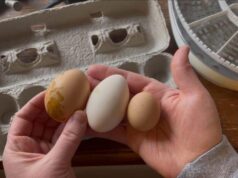When it comes to creating a cozy and healthy environment for your chickens, one of the most common questions chicken enthusiasts ask is, do nesting boxes need ventilation? The simple answer is yes, and this guide will explain why proper ventilation is crucial in nesting boxes. By understanding the importance of ventilation, you can ensure your chickens are comfortable, healthy, and productive.

The Importance of Ventilation in Nesting Boxes
Ventilation is a critical aspect of any chicken coop, including the nesting boxes. Proper airflow helps to regulate temperature, control moisture, and reduce harmful ammonia levels. Without adequate ventilation, nesting boxes can become stuffy and damp, creating an unhealthy environment for your chickens.
Temperature Regulation
Chickens are sensitive to temperature changes, and nesting boxes can become hot and uncomfortable without proper ventilation. Good airflow helps to keep the temperature stable, ensuring your chickens remain comfortable and willing to lay eggs.
Moisture Control
Moisture can quickly build up in poorly ventilated nesting boxes, leading to damp conditions. This can encourage the growth of mold and bacteria, which are harmful to your chickens and can affect egg quality. Ventilation helps to keep the nesting area dry and hygienic.
Reducing Ammonia Levels
Ammonia, produced by chicken droppings, can accumulate in nesting boxes without adequate ventilation. High ammonia levels are harmful to chickens, leading to respiratory problems and reduced egg production. Proper ventilation helps to keep ammonia levels in check.
How to Ventilate Nesting Boxes
There are several ways to ensure proper ventilation in your nesting boxes. Here are some effective strategies to consider:
Install Vents
Installing small vents in the walls of the nesting boxes can provide excellent airflow. Ensure these vents are adjustable to control the amount of air entering, especially during colder months.
Use Mesh or Wire
Consider using mesh or wire material for a portion of the nesting box walls. This allows for continuous airflow while keeping the nesting area secure.
Regular Cleaning and Maintenance
Regular cleaning of the nesting boxes is essential for maintaining good airflow. Remove old bedding, droppings, and any debris that may block vents or airflow.
Signs Your Nesting Boxes Need Better Ventilation
It’s crucial to recognize the signs that your nesting boxes may need better ventilation. Here are some indicators to watch for:
Foul Odor
A strong, unpleasant odor coming from the nesting boxes is a clear sign of poor ventilation. This smell is often due to high ammonia levels.
Mold and Dampness
Finding mold or damp bedding in the nesting boxes indicates excess moisture, a sign that ventilation needs improvement.
Chickens Avoiding the Boxes
If your chickens are avoiding the nesting boxes, it could be due to discomfort caused by poor ventilation. Chickens prefer a dry, fresh environment for laying eggs.

FAQs About Nesting Box Ventilation
Why is ventilation important in nesting boxes?
Ventilation is crucial for regulating temperature, controlling moisture, and reducing ammonia levels, all of which contribute to a healthy and comfortable environment for chickens.
Can I use natural ventilation methods?
Yes, natural ventilation methods, such as using mesh or wire for parts of the nesting box, can be effective in providing continuous airflow.
How often should I check and clean the vents?
Regular maintenance is essential. Check and clean the vents at least once a month to ensure they are not blocked and are functioning correctly.
For more information on ventilating nesting boxes and other chicken care topics, visit our website. Additionally, this external resource offers creative ideas for chicken nesting boxes.
This article contains affiliate links. We may earn a commission at no extra cost to you.











